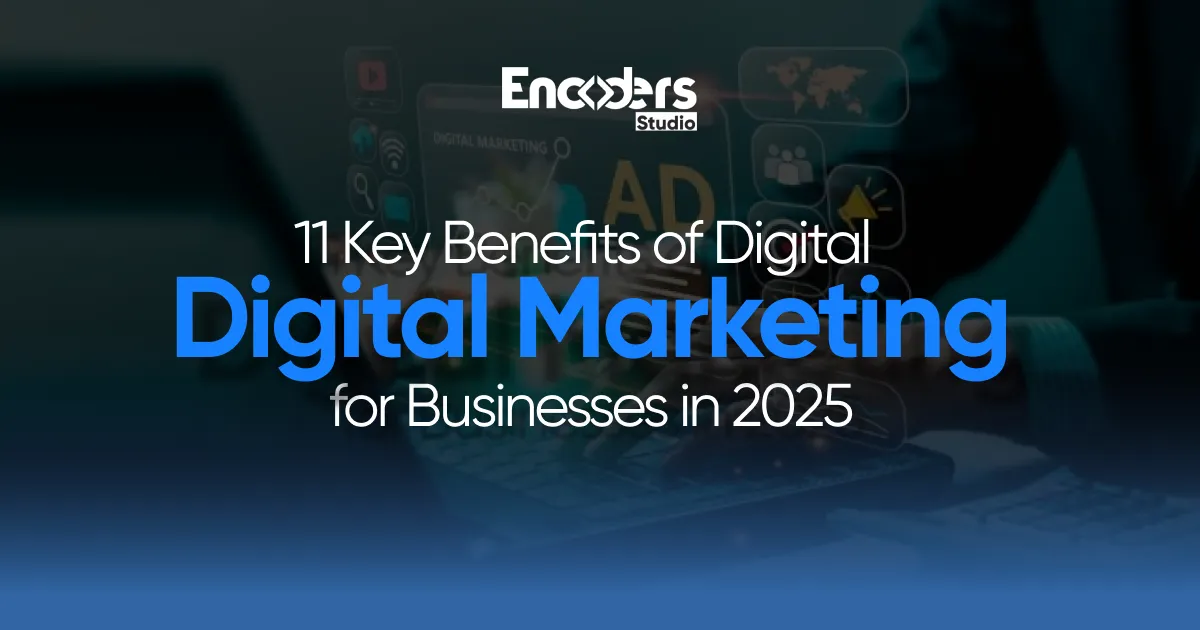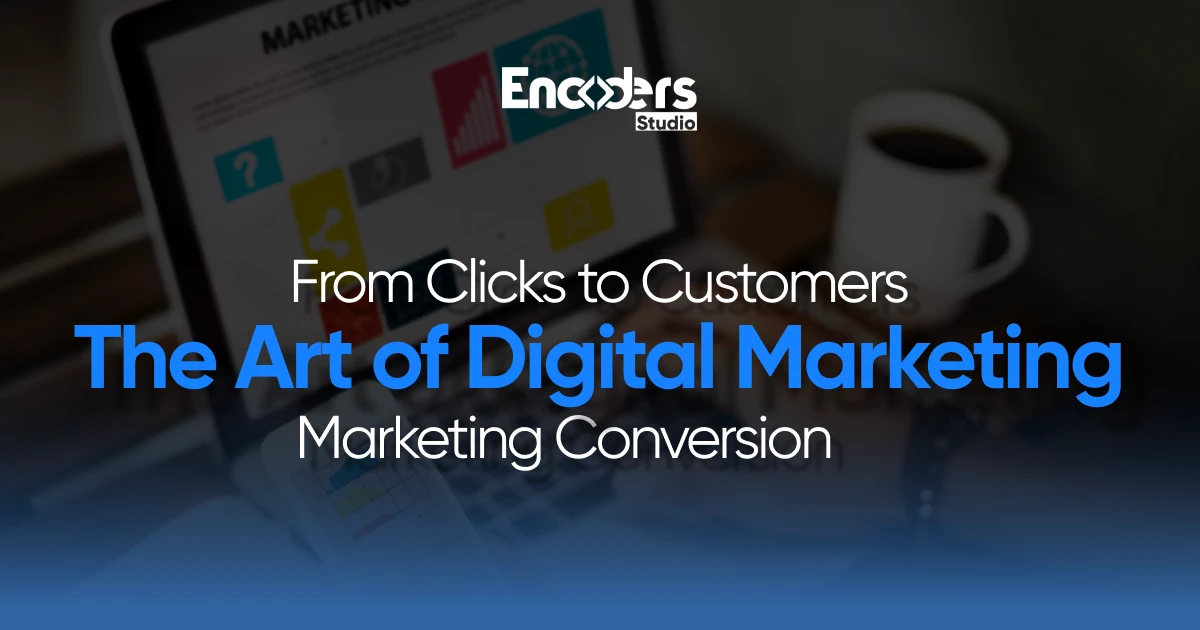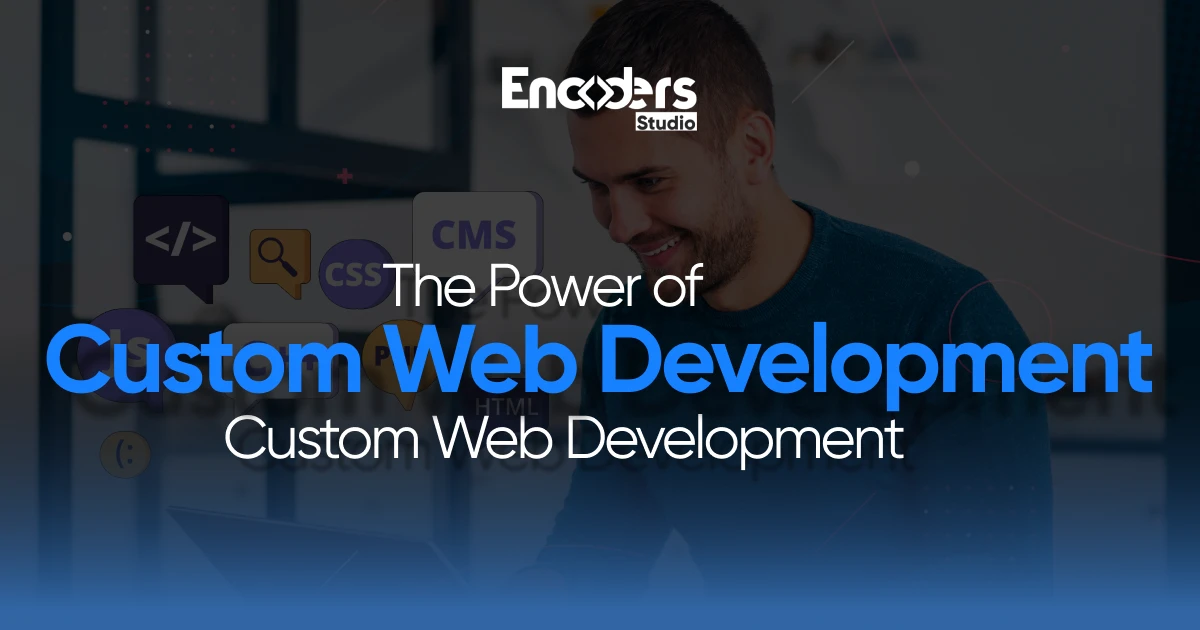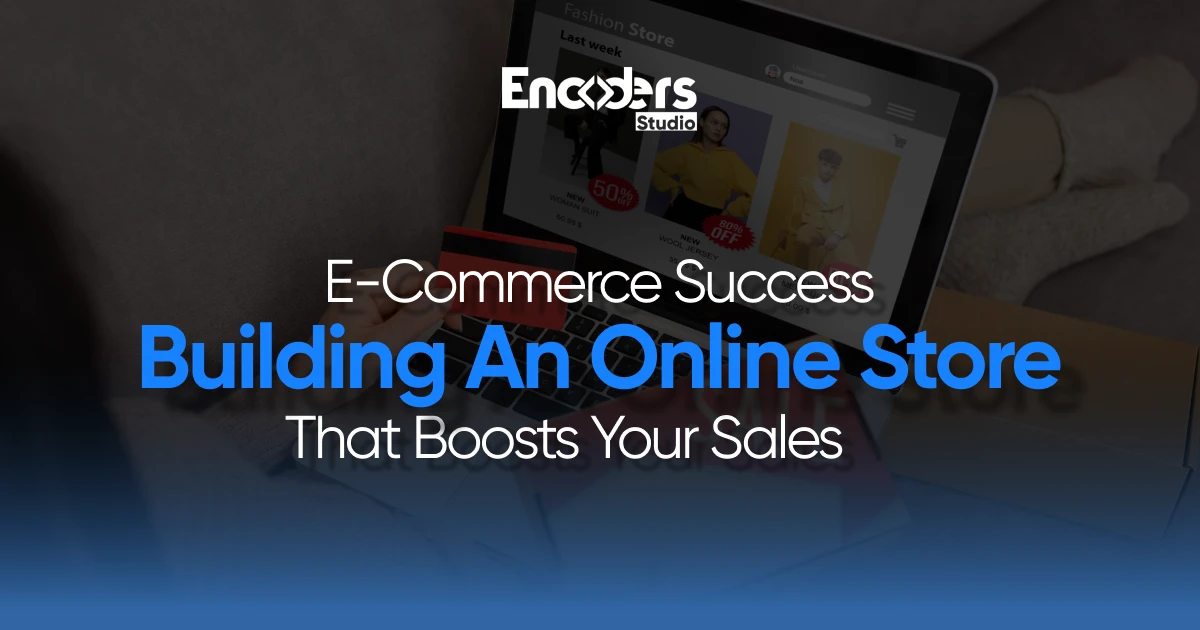[TL;DR]
Digital marketing in 2025 offers 11 major benefits: global and local reach, cost-effectiveness, precise targeting, measurable results, higher ROI, enhanced brand awareness, increased engagement, flexibility, multiple channels, competitive advantage, and improved personalization. Encoders Studio helps Pakistani businesses leverage these benefits for sustainable growth.
People no longer rely on billboards, flyers, or cold calls to discover a brand. They search online, scroll through social media, compare reviews, watch videos, and make decisions faster than ever. Digital marketing has become the bridge between your business and the trust of your customers. A strong online presence allows your brand to appear exactly when people are searching. Some will pause on a social media post, others might click on a result that feels right, or open an email that speaks to their need. These small moments shape big decisions.
Most businesses today face the same challenge. Creating enough content, reaching the right audience, and managing multiple campaigns manually takes too much time and resources. Meanwhile, smart companies are using artificial intelligence to handle these tasks automatically.
Fact: Businesses using digital marketing see up to 50% higher return on investment compared to traditional methods. However, many companies still haven’t fully adopted digital strategies.
Want to Grow with Confidence? Encoders Studio helps businesses build trust, reach real people, and turn clicks into lasting growth. Start your journey with a team that treats your success like its own.
1. Global Reach and Local Reach
Digital marketing enables businesses to connect with audiences worldwide, regardless of business size. A small local shop can now reach customers in different countries, while also targeting neighbors down the street.
The beauty of digital marketing lies in its flexibility. You can cast a wide net to capture international customers or focus laser-sharp on your local community. This dual capability gives businesses unprecedented control over their market reach.
Quick Insights: Companies using digital marketing can reach audiences that are 10 times larger than traditional marketing methods allow.
Global Opportunities
Digital marketing breaks down geographical barriers that once limited business growth. Your website works 24/7, serving customers while you sleep and reaching people you could never meet in person.
Social media platforms, search engines, and online advertising networks give you access to billions of potential customers worldwide. This global reach was once available only to large corporations with massive budgets.
Global reach benefits include:
- 24/7 availability: Your business never closes online
- Multiple time zones: Serve customers around the clock
- Language targeting: Reach people who speak different languages
- Currency options: Accept payments from anywhere
- Cultural adaptation: Customize messages for different markets
Local Market Dominance
Enhanced visibility in local markets through targeted strategies like local SEO helps businesses dominate their immediate area. Local digital marketing ensures you appear when nearby customers search for your services.
Smart local targeting connects you with customers who are ready to visit your store or use your services immediately. These are often the most valuable customers because they’re looking for solutions right now.
Local targeting strategies include:
- Google My Business optimization: Appear in local search results
- Location-based ads: Target people within specific areas
- Local keywords: Rank for searches in your city
- Community engagement: Connect with local social media groups
- Review management: Build trust with local testimonials
2. Cost-Effectiveness
Digital marketing offers significantly lower costs compared to traditional marketing channels. Cost-per-thousand impressions (CPM) for digital ads ranges between $3 to $10, while traditional media often exceeds $22. This means you can launch a social media campaign for the price of a single newspaper ad and reach a much wider audience with better targeting. Traditional advertising usually demands large upfront investments with no guaranteed results.
Flexible Budget Options
Flexible budgeting options work for businesses of all sizes. Whether you have a few hundred dollars or thousands to spend, digital marketing platforms accommodate your budget and deliver proportional results.
You control exactly how much you spend and can adjust budgets instantly based on performance. This flexibility protects you from wasting money on ineffective campaigns.
Budget flexibility includes:
- Daily spending limits: Never exceed your comfort zone
- Campaign pausing: Stop spending instantly if needed
- Performance-based scaling: Increase budgets for winning campaigns
- Seasonal adjustments: Spend more during peak times
- Test budgets: Try new strategies with minimal risk
Cost Comparison Benefits
The cost advantages of digital marketing become clear when compared to traditional methods. A television commercial might cost thousands to reach a broad audience, while targeted digital ads reach interested prospects for much less.
Digital marketing also provides better tracking, so you know exactly what you’re getting for your investment. This transparency helps you make smarter budget decisions.
Cost comparison highlights:
- Lower entry costs: Start marketing with small budgets
- Better targeting: Reach ideal customers, not everyone
- Measurable results: Track every dollar spent
- No waste: Pay only for engaged audiences
- Scalable growth: Increase spending as results improve
3. Precise Audience Targeting
Digital marketing uses advanced targeting based on demographics, interests, and behaviors. You can reach people based on their age, location, hobbies, recent purchases, and even websites they’ve visited. Personalized ads driven by interests or behavior deliver up to 10 times higher conversion rates.
This precision eliminates the guesswork from marketing. Instead of hoping your message reaches the right people, you can guarantee it lands in front of your ideal customers.
Advanced Targeting Options
Modern digital platforms offer targeting options that were impossible with traditional media. You can create detailed customer profiles and find people who match those exact characteristics online.
The depth of available targeting data continues to grow as people share more information and engage with digital platforms. This creates better targeting opportunities every year.
Advanced targeting includes:
- Demographic targeting: Age, gender, income, education level
- Interest targeting: Hobbies, preferences, and passions
- Behavioral targeting: Past purchases and online actions
- Geographic targeting: Countries, cities, or neighborhoods
- Device targeting: Mobile, desktop, or tablet users
Data-Driven Audience Refinement
Using data and analytics to refine audience segments leads to higher conversion rates. You can analyze which audience segments respond best to your messages and focus more resources on those groups.
A professional digital marketing agency understands how to use audience data effectively. They know which targeting options work best for different business types and goals.
Data refinement strategies include:
- A/B testing: Compare different audience segments
- Conversion tracking: Identify highest-value customers
- Lookalike audiences: Find people similar to your best customers
- Exclusion targeting: Avoid showing ads to the wrong audiences
- Performance analysis: Optimize based on results
4. Measurable Results and Analytics
Digital marketing provides real-time tracking and performance measurement with sophisticated tools. You can see exactly how many people viewed your ad, clicked your link, and purchased within minutes of launching a campaign.
This immediate feedback loop allows for quick adjustments and continuous improvement. You never have to wonder whether your marketing is working, but the data tells you clearly.
Pro Tip: Focus on measuring metrics that directly relate to your business goals rather than trying to track everything available.
Real-Time Performance Tracking
Real-time tracking shows you what’s happening with your campaigns as it occurs. You can watch visitors come to your website, see which pages they visit, and track their journey to becoming customers.
This instant feedback helps you make smart decisions quickly. If a campaign isn’t working, you can pause it immediately instead of wasting more money.
Real-time tracking benefits:
- Live data updates: See results as they happen
- Quick problem identification: Spot issues immediately
- Instant optimization: Make improvements right away
- Budget protection: Stop spending on poor performers
- Opportunity capture: Scale up successful campaigns fast
Data-Driven Campaign Optimization
The ability to optimize campaigns based on data-driven insights leads to continuously improving results. Each campaign teaches you something new about your audience and what messaging works best.
Top digital marketing agencies in Pakistan use advanced analytics to help clients understand their data and make profitable decisions based on concrete evidence rather than assumptions.
Optimization opportunities include:
- Message testing: Find the most compelling headlines
- Audience refinement: Focus on the highest-converting segments
- Timing optimization: Reach people at the best moments
- Channel selection: Invest in the most effective platforms
- Creative improvement: Use winning design elements
5. Higher Return on Investment (ROI)
Digital marketing delivers improved ROI through efficient targeting and lower costs. When you reach exactly the right people with the right message at the right time, more of them become customers.
The combination of lower costs and better targeting creates a powerful effect on profitability. You spend less money to reach more qualified prospects, resulting in higher returns.
Continuous Optimization Benefits
Continuous optimization leads to better results over time. Digital marketing platforms learn from your campaign data and automatically improve performance through machine learning and artificial intelligence.
Unlike traditional advertising, where you place an ad and hope for the best, digital marketing gets smarter with every interaction. This learning effect compounds your returns over time.
ROI improvement factors:
- Smart targeting: Reach people more likely to buy
- Cost efficiency: Pay less for better-qualified traffic
- Automation benefits: Let algorithms optimize for you
- Learning effects: Campaigns improve with more data
- Scaling advantages: Replicate successful strategies
Long-Term Value Creation
Digital marketing creates lasting value that continues to pay dividends long after initial campaigns end. Content you create, audiences you build, and data you collect become valuable business assets.
This long-term value creation makes digital marketing investment more attractive than traditional advertising, which stops working the moment you stop paying.
Long-term benefits include:
- Content assets: Blog posts and videos that attract customers indefinitely
- Audience building: Email lists and social media followers
- Brand awareness: Online presence that builds over time
- Search rankings: Organic visibility that doesn’t require ongoing ad spend
- Customer relationships: Direct communication channels with prospects
6. Enhanced Brand Awareness
Digital marketing builds brand recognition through multiple digital channels working together. Your brand appears consistently across social media, search results, websites, and online advertising platforms.
This multi-channel presence creates multiple touchpoints where potential customers encounter your brand. The more places people see your brand, the more familiar and trustworthy it becomes.
Multi-Channel Brand Building
Multiple digital channels work together to reinforce your brand message and increase recognition. Each platform offers unique opportunities to showcase different aspects of your business personality.
Consistent online presence across channels increases trust and credibility with potential customers. People feel more confident buying from brands they’ve seen multiple times in different places.
Brand-building channels include:
- Social media platforms: Share personality and engage directly
- Search engine results: Appear when people look for solutions
- Content marketing: Demonstrate expertise and provide value
- Email marketing: Maintain regular contact with prospects
- Online advertising: Reach new audiences with targeted messages
Trust and Credibility Development
Building trust through a consistent digital presence takes time, but creates lasting competitive advantages. When people research your business online, they find professional websites, positive reviews, and active social media accounts.
This digital credibility becomes especially important as more customers research businesses online before making purchasing decisions. A strong digital presence signals that you’re a legitimate, established business.
Trust-building elements include:
- Professional website: Shows you’re serious about business
- Customer reviews: Provide social proof of quality
- Regular content: Demonstrates ongoing expertise
- Social media activity: Shows you’re responsive and engaged
- Online mentions: Third-party validation of your reputation
7. Increased Customer Engagement
Digital marketing enables two-way communication and real-time interaction with customers through social media, email, and chat. Unlike traditional advertising, digital marketing creates conversations rather than one-way broadcasts.
This interactive capability builds stronger relationships between businesses and customers. People feel more connected to brands that respond to their questions and engage with their comments.
Real-Time Communication Benefits
Real-time interaction capabilities allow businesses to respond to customer needs immediately. Whether someone has a question on social media or needs help through website chat, digital marketing provides instant communication channels.
Higher engagement rates foster loyalty and long-term relationships that increase customer lifetime value. Engaged customers buy more, refer others, and stay loyal longer than passive customers.
Engagement opportunities include:
- Social media conversations: Respond to comments and messages
- Live chat support: Help website visitors instantly
- Email interactions: Maintain ongoing communication
- Community building: Create groups around shared interests
- User-generated content: Encourage customers to share experiences
Loyalty Building Strategies
Digital marketing creates multiple opportunities to build customer loyalty through consistent, valuable interactions. Each positive interaction strengthens the relationship and increases the likelihood of repeat business.
Loyal customers become brand advocates who refer new customers and defend your business against competitors. This word-of-mouth marketing provides incredible value that compounds over time.
Loyalty-building tactics include:
- Personalized communication: Tailor messages to individual preferences
- Exclusive offers: Reward loyal customers with special deals
- Behind-the-scenes content: Share your business story and values
- Customer recognition: Highlight and celebrate customer success
- Feedback collection: Show you value customer opinions
8. Flexibility and Adaptability
Digital marketing offers the ability to quickly adjust campaigns in response to market trends or performance data. You can change your message, targeting, or budget within minutes of identifying an opportunity or problem.
Traditional marketing requires long lead times and significant commitments that make quick changes expensive or impossible. Digital marketing’s flexibility protects your investment and maximizes opportunities.
Quick Response Capabilities
The ability to respond quickly to market changes gives digital marketers significant advantages over traditional approaches. When news breaks or trends emerge, you can adjust your messaging immediately to stay relevant.
Testing new ideas and strategies involves minimal risk because you can start small and scale successful experiments. This testing capability accelerates learning and improvement.
Flexibility advantages include:
- Instant message changes: Update campaigns immediately
- Budget adjustments: Increase or decrease spending in real-time
- Audience modifications: Target different groups quickly
- Creative updates: Test new images and copy easily
- Channel switching: Move resources to better-performing platforms
Market Adaptation Strategies
Digital marketing’s adaptability helps businesses stay competitive in rapidly changing markets. When customer preferences shift or new opportunities arise, you can pivot your strategy without starting from scratch.
This adaptability proves especially valuable during uncertain times when business conditions change rapidly. Digital marketing provides the flexibility needed to survive and thrive during challenging periods.
Adaptation strategies include:
- Trend monitoring: Watch for emerging opportunities
- Performance analysis: Identify what’s working and what isn’t
- Competitive response: React quickly to competitor moves
- Seasonal adjustments: Modify approaches for different times of year
- Crisis management: Maintain communication during difficult periods
9. Multiple Content and Channel Options
Digital marketing utilizes various content formats, including blogs, videos, social media posts, email campaigns, and interactive content. Each format serves different purposes and appeals to different audience preferences.
This variety ensures you can reach people regardless of how they prefer to consume information. Some people love reading detailed articles, while others prefer watching short videos or looking at infographics.
Content Format Diversity
Different content types serve different stages of the customer journey and appeal to various learning styles. Video content might attract attention, while detailed blog posts help people make purchasing decisions.
Reaching audiences across multiple platforms increases effectiveness because it expands your potential reach and provides multiple opportunities for people to discover your business.
Content format options include:
- Blog posts: Provide detailed information and improve SEO
- Videos: Engage visual learners and increase social shares
- Infographics: Simplify complex information into digestible visuals
- Podcasts: Reach people during commutes and workouts
- Interactive content: Engage users with quizzes and calculators
Multi-Platform Strategy Benefits
Using multiple digital platforms creates a comprehensive marketing ecosystem where each channel supports and strengthens the others. Your blog content can be shared on social media, email newsletters can drive traffic to your website, and social media can build your email list.
This interconnected approach maximizes the value of every piece of content you create and provides multiple paths for customers to find and engage with your business.
Platform integration benefits:
- Content amplification: Share the same content across multiple channels
- Cross-platform promotion: Use each channel to promote others
- Audience growth: Build followers on multiple platforms
- Risk distribution: Don’t rely on a single platform for all traffic
- Comprehensive coverage: Reach people wherever they spend time online
10. Competitive Advantage
Digital marketing allows small and large businesses to compete on a level playing field. A well-executed digital strategy can help a small business outrank larger competitors in search results and reach the same audiences through social media.
The key advantage comes from creativity, consistency, and understanding your audience rather than having the biggest budget. Smart digital marketing strategies often outperform expensive traditional campaigns.
Innovation and Technology Adoption
Adoption of the latest digital trends and technologies keeps brands ahead of competitors who are slower to adapt. Being an early adopter of new platforms or techniques can provide significant advantages before competitors catch up.
Digital marketing moves fast, and staying current with new developments helps maintain competitive positioning. What works today might not work tomorrow, but early adopters benefit most from new opportunities.
Competitive advantages include:
- First-mover benefits: Be the first in your industry on new platforms
- Technology leverage: Use tools competitors don’t know about
- Audience insights: Understand customers better than competitors
- Agility advantages: Respond faster to market changes
- Innovation reputation: Become known as a forward-thinking company
Market Positioning Strategies
Digital marketing provides numerous opportunities to differentiate your business and establish unique market positioning. You can showcase expertise through content marketing, demonstrate personality through social media, and build authority through search engine optimization.
This positioning capability helps businesses carve out distinct niches even in crowded markets. Clear differentiation makes it easier for customers to choose your business over generic competitors.
Positioning strategies include:
- Thought leadership: Share expertise through valuable content
- Personality differentiation: Show a unique brand character
- Niche specialization: Become the go-to expert in specific areas
- Value proposition clarity: Communicate unique benefits clearly
- Community building: Create loyal followings around shared values
11. Improved Customer Insights and Personalization
Digital marketing involves the collection and analysis of customer data for tailored marketing approaches. Every interaction provides information about customer preferences, behaviors, and needs that can improve future marketing efforts.
This data collection happens automatically as customers engage with your digital properties. Each website visit, email open, and social media interaction adds to your understanding of what customers want.
Data Collection and Analysis
Modern digital marketing platforms automatically collect detailed information about customer behavior and preferences. This data provides insights that were impossible to gather through traditional marketing methods.
Personalized experiences increase customer satisfaction and conversion rates because people respond better to messages that feel relevant to their specific situation and interests.
Data insights include:
- Behavioral tracking: Understand how people interact with your content
- Preference identification: Learn what products and services interest different segments
- Journey mapping: See the path customers take from awareness to purchase
- Engagement patterns: Identify when and how people prefer to be contacted
- Conversion factors: Discover what motivates people to buy
Personalization Implementation
Using customer data to create personalized experiences requires both technology and strategy. The most successful businesses use automation to deliver relevant content while maintaining a human touch in their communications.
Personalization extends beyond just using someone’s name in emails. True personalization involves showing relevant products, sending timely messages, and creating experiences that feel customized to individual needs.
Personalization strategies include:
- Dynamic content: Show different website content to different visitors
- Personalized email campaigns: Send relevant offers based on past behavior
- Retargeting advertisements: Show ads for products people have viewed
- Customized product recommendations: Suggest items based on purchase history
- Tailored social media content: Share posts that appeal to specific audience segments
The Sooner You Start, The Further You Lead
Digital marketing in 2025 offers eleven powerful benefits that can change how your business grows and connects with customers. The question isn’t whether to invest in digital marketing, but it’s how quickly you can implement these strategies to stay ahead of the competition.
All Set To Experience These Digital Marketing Benefits?
At Encoders Studio, we’ve helped businesses across Pakistan experience every one of these digital marketing benefits firsthand. Our complete approach ensures you get maximum value from each digital marketing strategy.
Don’t let your competitors capture the advantages of digital marketing while you’re still considering your options. The digital revolution is happening now, and businesses that act quickly gain the biggest advantages.
FAQs
What makes digital marketing more cost-effective than traditional marketing?
Digital marketing allows businesses to reach large, targeted audiences at a fraction of the cost of TV, radio, or print ads. It offers flexible budgeting and real-time performance tracking for better ROI.
How does digital marketing improve targeting and personalization?
Digital marketing uses advanced analytics and AI to segment audiences and deliver personalized content. It creates offers and ads based on user behavior, demographics, and interests, increasing engagement and conversions.
What are the main ways digital marketing helps measure results?
Digital marketing provides real-time data on website traffic, engagement, conversions, and ROI through tools like Google Analytics. This enables businesses to track, analyze, and optimize campaigns for measurable success.
Can small businesses benefit from digital marketing as much as large companies?
Yes, digital marketing levels the playing field by offering affordable and scalable strategies. It allows small businesses to compete with larger brands and reach global or local audiences effectively.
How does digital marketing boost customer engagement and loyalty?
Digital marketing enables two-way communication through social media, email, and chat, fostering stronger relationships. It provides instant feedback and higher brand loyalty through consistent and relevant interactions.
Why is digital marketing expected to keep growing in 2025?
Digital marketing continues to grow due to increasing online activity and advances in AI and analytics. The shift of business budgets toward digital channels enables more effective, data-driven marketing strategies.




